Intel Rocket Lake (14nm) Review: Core i9-11900K, Core i7-11700K, and Core i5-11600K
by Dr. Ian Cutress on March 30, 2021 10:03 AM EST- Posted in
- CPUs
- Intel
- LGA1200
- 11th Gen
- Rocket Lake
- Z590
- B560
- Core i9-11900K
Gaming Tests: Borderlands 3
As a big Borderlands fan, having to sit and wait six months for the EPIC Store exclusive to expire before we saw it on Steam felt like a long time to wait. The fourth title of the franchise, if you exclude the TellTale style-games, BL3 expands the universe beyond Pandora and its orbit, with the set of heroes (plus those from previous games) now cruising the galaxy looking for vaults and the treasures within. Popular Characters like Tiny Tina, Claptrap, Lilith, Dr. Zed, Zer0, Tannis, and others all make appearances as the game continues its cel-shaded design but with the graphical fidelity turned up. Borderlands 1 gave me my first ever taste of proper in-game second order PhysX, and it’s a high standard that continues to this day.
BL3 works best with online access, so it is filed under our online games section. BL3 is also one of our biggest downloads, requiring 100+ GB. As BL3 supports resolution scaling, we are using the following settings:
- 360p Very Low, 1440p Very Low, 4K Very Low, 1080p Badass
BL3 has its own in-game benchmark, which recreates a set of on-rails scenes with a variety of activity going on in each, such as shootouts, explosions, and wildlife. The benchmark outputs its own results files, including frame times, which can be parsed for our averages/percentile data.
| AnandTech | Low Resolution Low Quality |
Medium Resolution Low Quality |
High Resolution Low Quality |
Medium Resolution Max Quality |
| Average FPS |  |
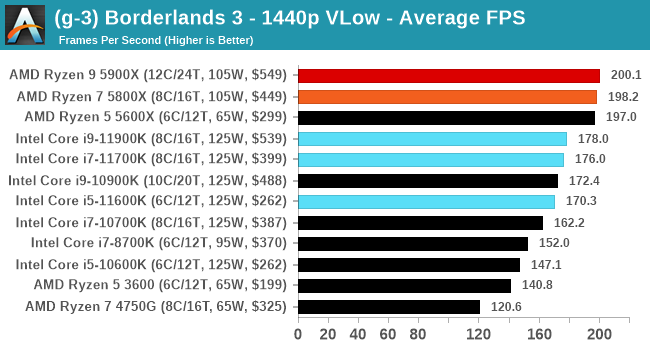 |
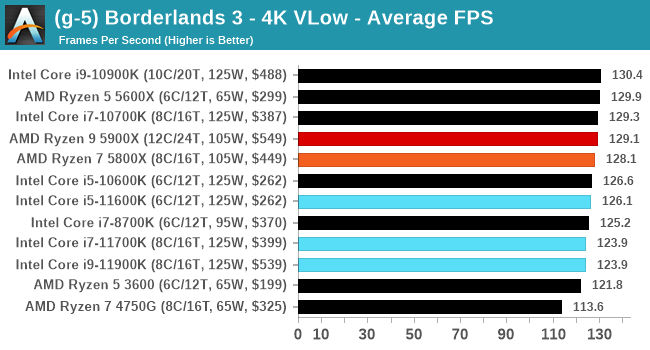 |
 |
| 95th Percentile | 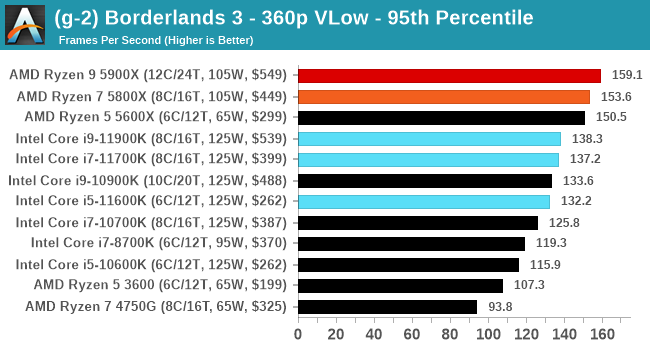 |
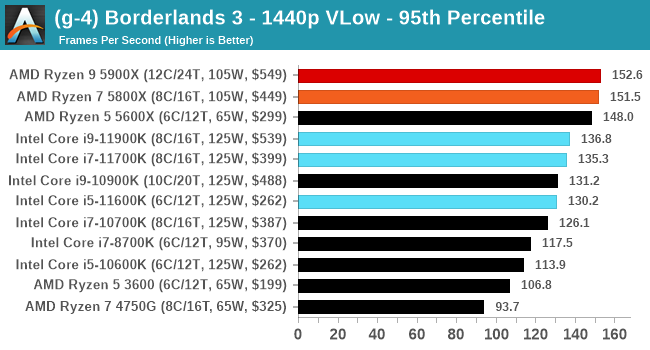 |
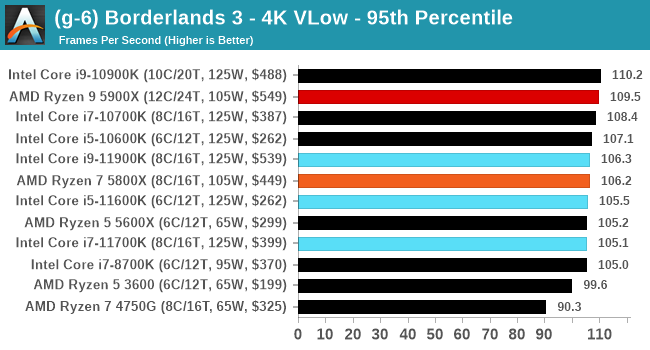 |
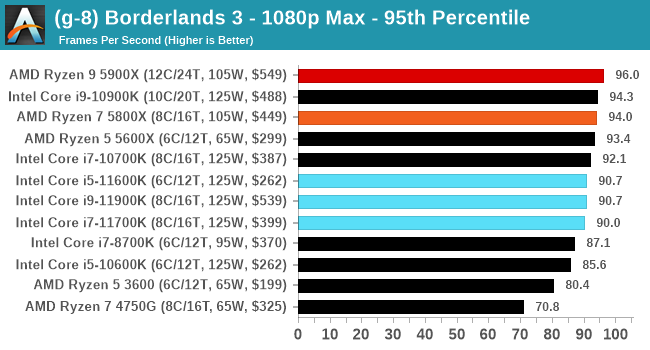 |
All of our benchmark results can also be found in our benchmark engine, Bench.












279 Comments
View All Comments
mitox0815 - Tuesday, April 13, 2021 - link
"Just abandon"...those clocks you dream of might have been possible on certain CPUs, but definitely noton a broader line-up. The XPs ran hot enough as it was, screwing more out of them would've made no sense. THAT they tried with the 9590...and failed miserably. Not to mention people could OC the Northwoods too, beyond 3.6 or 3.7 Ghz in fact...negating that point entirely. As was said...Northwood, especially the FSB800 ones with HT were the top dogs until the A64 came around and showed them the door. Prescott was...ambitious, to put it nicely.mitox0815 - Tuesday, April 13, 2021 - link
*not onTheinsanegamerN - Wednesday, March 31, 2021 - link
Netburst was built for both high clock speeds and predictable workloads, such as video editing, where it did quite well. Obviously it royally sucked for unpredictable workloads like gaming, but you could see where intel was heading with the idea.Oxford Guy - Wednesday, March 31, 2021 - link
'you could see where intel was heading with the idea'Creating the phrase 'MHz myth' in the public consciousness.
GeoffreyA - Friday, April 2, 2021 - link
"MHz myth in the public consciousness"And it largely worked, even in the K8 era with the non-enthusiast public. Only when Core 2 Duo dropped to lower clocks was it accepted overnight that, yes, lower clocks are now all right because Intel says so.
Prosthetic Head - Tuesday, March 30, 2021 - link
Your point still stands, however P4 was also a VERY low bar for to measure IPC improvements relative to.Hifihedgehog - Tuesday, March 30, 2021 - link
Well, Bulldozer was too and look what AMD did with Ryzen...Oxford Guy - Saturday, April 3, 2021 - link
AMD had a long time. 2011 is stamped onto the spreader of Piledriver and that was only a small incremental change from Bulldozer, which is even older.Oxford Guy - Saturday, April 3, 2021 - link
And, Bulldozer had worse IPC than Phenom. So, AMD had basically tech eternity to improve on the IPC of what it was offering. It made Zen 1 seem a lot more revolutionary.GeoffreyA - Saturday, April 3, 2021 - link
"It made Zen 1 seem a lot more revolutionary"You're right; and if one compares against Haswell or Skylake, one will see that the Intel and AMD designs are crudely the same from a bird's-eye point of view, except for AMD's split-scheduler inherited from the Athlon. I think that goes to show there's pretty much only one way to make an efficient x86 CPU (notice departures are disastrous: Netburst/Bulldozer). Having said that, I'm glad AMD went through the BD era: taught them a great deal. Also forced them to start from scratch, which took their design further than revising K10 would have done.